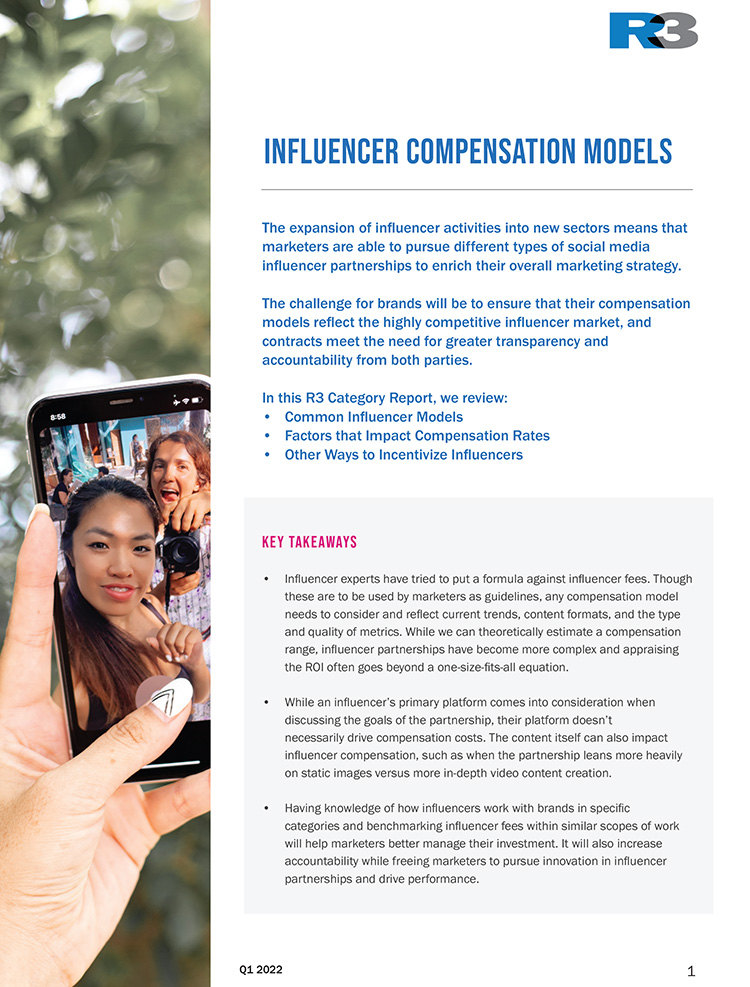The expansion of influencer activities into new sectors means that marketers are able to pursue different types of social media influencer partnerships to enrich their overall marketing strategy.
The challenge for brands will be to ensure that their compensation models reflect the highly competitive influencer market, and contracts meet the need for greater transparency and accountability from both parties.
In this R3 Category Report, we review:
- Common influencer compensation models
- Factors that impact compensation rates
- Other ways to incentivize influencers
Key Takeaways
- Influencer experts have tried to put a formula against influencer fees. Though these are to be used by marketers as guidelines, any compensation model needs to consider and reflect current trends, content formats, and the type and quality of metrics. While we can theoretically estimate a compensation range, influencer partnerships have become more complex and appraising the ROI often goes beyond a one-size-fits-all equation.
- While an influencer’s primary platform comes into consideration when discussing the goals of the partnership, their platform doesn’t necessarily drive compensation costs. The content itself can also impact influencer compensation, such as when the partnership leans more heavily on static images versus more in-depth video content creation.
- Having knowledge of how influencers work with brands in specific categories and benchmarking influencer fees within similar scopes of work will help marketers better manage their investment. It will also increase accountability while freeing marketers to pursue innovation in influencer partnerships and drive performance.

